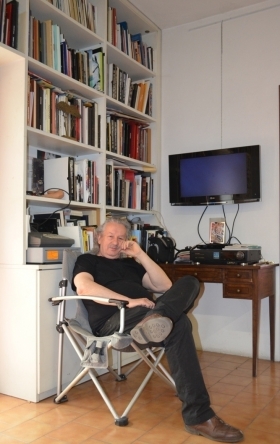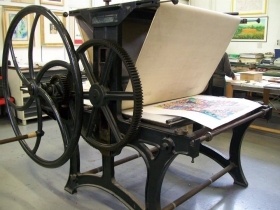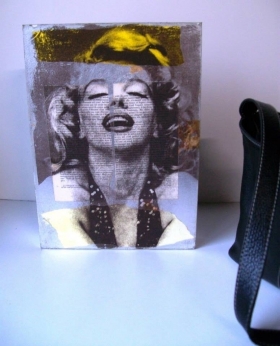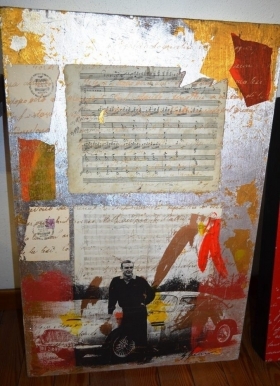GIULIANO GRITTINI – Photographer, art printer, artist.
My first encounter with Giuliano Grittini was random and actually not looked for either.
I am not an expert in modern art and may never become one actually… I belong to the category of people that, when invited to an art show, try to show a neutral facial expression but in actuality think: “please,no!” “Can’t take this” etc.
Because of that, I try to document myself ahead (on the artist and his work alike), to avoid arriving there to admire work that might make me think “if I received it as a gift I would sell it the next day” or “I would not even keep in my dark basement”.
Regretfully, not having had a chance to read anything ahead of time, it truly felt like a blind date.
The exhibit was organized by Formitalia Luxury Group SpA and held at the Aston Martin center in Milano. I decided to attend and check out the new “Luxury” line of furniture 100% Made in Italy made for Aston Martin.
With that in mind, what started as a blind date, with no particular desire nor any positive energy on my side, turned into a rapid quick change of mind; I loved it!
Sort of like “Folgorata sulla via di Damasco”? (ed struck on the road to Damascus).
The title was “ I Miti” with work inspired by the luxury cars by Aston Martin as well as icons such as Mick Jagger, The Beatles, Marilyn Monroe and of course the man who better than others spells legacy with Aston Martin: Sean Connery.
I recall that the grand opening was set for the next days and therefore it seemed quiet and peaceful for me to attend. It was also happening at the same time as the Salone del Mobile (ed furniture expo).
Did i say I was struck? Perhaps a bit more than that. I was admiring each painting for a while. Almost like hypnotized and not paying attention to the clock at all. I recall the one about Mick Jagger in particular.. I could not understand why, while being so different and in contrast with one another, when put together they all just worked amazingly well.
Every piece was just so beautiful and in harmony with each other.
Silver, gold, an old music script, some hot red color brushes, a bit of a poem, a Mick Jagger picture, all blending into something magic.
Quiet some time went by from that blind date, giving me a chance to meet Grittini personally and to appreciate him more, attend other shows and to visit his famous art printing business (www.incisionearte.it). and not to mention… to chat with him for a moment (or two..)
Please continue the reading, as this interview, which serves as a mini biography, rather than a philosophical-artistic dissertation happens to be also a narration of his journey. Perhaps, an aspiring photographer or art printer or artist could benefit from him and transform his dream into reality?
This is what transpired from my meeting with his wife Marina Cerati, his daughter Lora and of course with Giuliano Grittini himself. Enjoy the reading.











